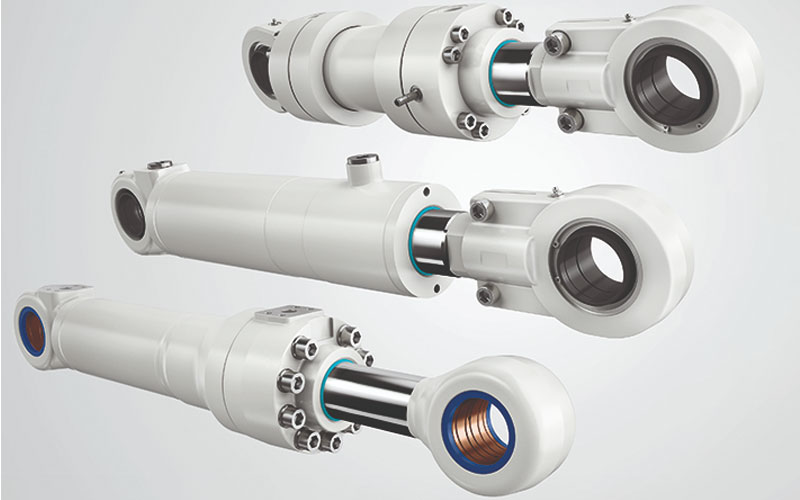
Hydraulic cylinders are crucial to industrial applications. They provide a large amount of linear force and efficient power-to-weight ratios, allowing them to control their movement precisely.
Depending on the application, they can be either single or double-acting. In single-acting cylinders, only one chamber receives pressurized hydraulic fluid. This chamber is usually opposite the cylinder rod for push applications or spring-loaded for retraction.
Versatility
Hydraulic cylinders are used in an immense variety of applications across industries. From heavy machinery in construction to precise movements in manufacturing and automation, hydraulic cylinders deliver the force needed for a broad range of tasks.
There are several different cylinder forces to choose from, making it easy to find the right option for your application. Additionally, various cylinder types, such as single and double-acting cylinders, accommodate specific needs.
Cylinders are also made of various materials to ensure they can handle the operating environment. For instance, cylinders exposed to high temperatures need seals that won’t melt, and cylinders that operate in harsh environments need a material that can resist corrosion. They also require a specialist hydraulic fluid to operate correctly.
Reliability
Hydraulic products operate under high pressure and can absorb massive amounts of force. This is why they are critical to infrastructure repairs like lifting buildings and levelling bridges and agricultural applications like seed planting and fertilizer spraying. To increase reliability, they can be designed with extra features like backup rings and specially created seals that can withstand extreme conditions.
Cylinders can also be single or double-acting. Which one they are will depend on the intended use. Double-acting cylinders are more common as they offer more versatility thanks to their bidirectional functionality. They are also more likely to be ISO-compliant for industries that require strict quality and safety standards. Cylinders can be constructed from various materials depending on the area in which they will be used.
Efficiency
Herculean tasks like pushing an aeroplane out of the sky or levelling a bridge would only be possible with modern hydraulic cylinders. The hydraulic cylinder’s ability to transfer massive amounts of force into linear motion makes these devices worthwhile across many applications.
Standard cylinders use a piston rod that converts pressure from pressurized hydraulic fluid into mechanical force to move an object. They can be either single or double-acting. The difference between the two involves which chamber receives pressurized hydraulic fluid, with the opposite end of the cylinder rod usually being spring-loaded to cater to the retraction of the piston rod.
Innovative sensing cylinders that offer precise positioning control even with limited operator skill levels are available for more advanced functionality. This lessens the possibility of mishaps when inexperienced equipment users operate the machinery.
Safety
Hydraulic cylinders are vital in numerous industrial applications, providing the force and precise movements that drive many operations. They are often used in construction equipment, agricultural machinery, and industrial robotics.
They provide significant force in a small footprint, which makes them ideal for heavy-duty applications. They can also be used for precision movement and positioning.
Safety is one of the most important aspects when using hydraulic cylinders. They should be properly maintained and stored to reduce the risk of failure or leakage, which could lead to injury. Using proper lifting equipment when moving and storing high-pressure cylinders is also a good idea. Additionally, all workers should be clear of pinch points and rotating parts to prevent injuries.
Customization
It is possible to design bespoke hydraulic cylinders to satisfy specific application needs. The most common customizations include stroke length (how far the piston travels) and rod diameter.
Other cylinder customization options can include upgrades to the materials used in the fabrication, coatings and finishes, valves, manifolds, and electronics that are integrated into the design of a hydraulic cylinder. For applications in which the cylinder will be exposed to extreme ambient temperatures, speciality seals can be chosen.
Hydraulic cylinders can also be modified to accommodate shear loads and provide accurate mounting alignment. They can also be welded, which adds to the durability of the cylinder. Other specialized hydraulic cylinders include telescoping cylinders, which extend from a compact retracted position and feature multiple stages of extension and retraction, and smart cylinders, engineered to incorporate position-sensing technologies for end-user applications.







